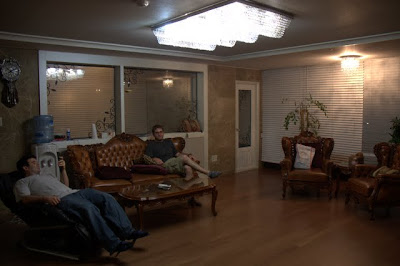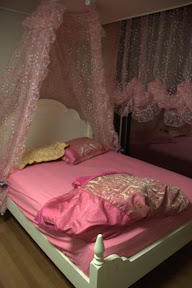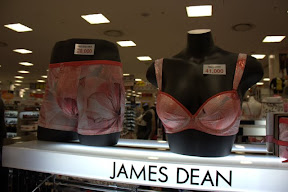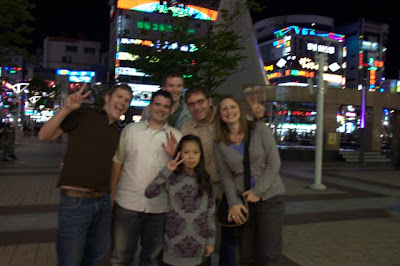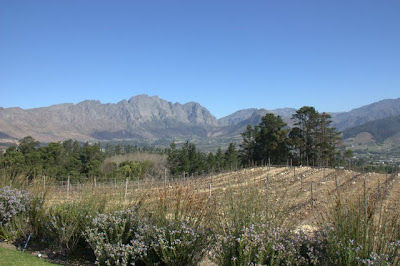Laos, the Bird’s Eye View.
Laos. (Don’t ask me if it is pronounced Lao or Laos, because I still don’t have the foggiest clue. I heard it both ways while we were there). I wouldn’t know much about this landlocked, socialist country, except I’ve been reading travel blogs for years. And for years, people have been touting Laos as the “undiscovered gem” in Southeast Asia. Perhaps at some point that was true, but trust me, you won’t be the only person traveling through Laos. In fact, a lot of our stops in Laos seemed to be the most touristy we’ve experienced in Southeast Asia. The Laotian government removed roadblocks to visitors traveling to Laos in the nineties; now, one in every 10.9 jobs in the country is in the tourist industry and 1.876 million people visited the country in 2010. Pretty remarkable when you think about how the country only has 6.8 million people. But it is true that Laos is less crowded than its neighbors and gives you room to breathe.
While we were there, I felt like Laos was noticeably more expensive than Thailand. As it turned out, we spent $8 less per day in Laos than we did in Thailand. I suppose we thought Laos was more expensive at the time because you get better value for your money in Thailand: more amenities, more modern. I suppose at the time of our purchases, we thought Laos should have been cheaper since it was less developed. But here’s the funny thing about Laos. There really aren’t any big cities. The capital city is only getting its first movie theater this year. There are only a handful of paved roads criss-crossing the country. Most people live in wooden shacks along dirt roads. But you can find a trendy cafe in many towns where the tourists frequent with a computerized cash register, free wi-fi, and coffee drinks that wouldn’t be out of place anywhere in the Western world. There are two economies in Laos: the local economy and the tourist economy. And more so than anywhere else in Southeast Asia, the economies don’t really mingle together. Sure, you can ride transport or eat with locals, but you have to go out of your way to do so. Laos is one of the poorest countries in the world, but you may not even notice if you don’t leave the tourist areas.
Our original plan was to blitz through in a week. We ended up staying 24 days. A week seemed reasonable last winter sitting in our apartment, staring at maps and planning our itinerary. Laos is kind of small, we figured. But unless you fly in and back out, a week won’t get you anywhere. Laos is the kind of place that takes a while to get around. Its also the kind of place that draws you in slowly and encourages meandering. These factors, along with a drawn out stomach bug for me in Luang Prabang and Vientiane, meant that we stayed longer than we planned. I didn’t realize how laid back Laos was until after we left and were in the middle of a whirlwind of scooters and people in Phnom Penh.
The two most-talked about aspects of Laos is the fantastically tasty and cheap Beer Lao, which we’ve covered, and the concept of Lao time. Everything was always hurry up and wait, hurry up and wait, probably best epitomized by a shuttle to an overnight bus we took in Vientiane. The shuttle came at the last possible minute to pick us up. At every pick-up, the driver threw the luggage in the back of the truck, and sped off before the new passenger ever sat down. Suddenly, he pulled over to the side of the road and there we sat. When asked what we were doing, he only told us, “No worries, no worries.” Just as suddenly as we pulled over, he was yelling for everyone to get back in the truck and we were careening down the road, chasing after our bus. Hurry up and wait, hurry up and wait, and always no worries.
Less discussed is the abundance of old VW Beetles throughout the country, giving rise to another item to add to my wanderlist: road tripping in Southeast Asia in a Bug. It will happen.
Unlike the Thais or the Cambodians, who are all smiles all of the time, the Lao people are more reserved. At first I thought the people we encountered were rude, but it just took longer to coax a smile out. Laos felt traditional; lots of families gathered together to eat communal meals outside and women wore long, silk skirts to sit side-saddle on motorbikes. One of the first things we noticed upon entry were the adorable Lao babies. There were tons of them, and almost always to mothers who looked babies themselves – probably because Laos has the youngest population in Asia. The Lao food wasn’t spectacular, but it was usually cheap, and there are plenty of tasty cafes with French influence, leftover from the days when Laos was part of French Indochina. The raw beauty of the country is stunning, and is reason alone to visit. Visiting central Laos was enjoyable, but we didn’t become engaged with Laos until we ventured to the less-visited south. Come explore Laos with us…

A bar called Utopia in Luang Prabang. Laos is the most bombed country in the world, per capita, courtesy mostly of the United States. More on that later.
The Slooooooooooow Boat to Luang Prabang
After leaving spending Christmas in Chiang Mai, we were determined to get to Laos to ring in 2011. So of course we took the slowest way possible. Over the course of three days, we traveled from Chiang Mai, Thailand to Luang Prabang, Laos by a combination of bus and a slow boat (not to mention pick-up trucks, songtheaws, and a “ferry”). They call it the slow boat because it involves two very long days of cruising on the Mekong River, as opposed to the fast boat that makes the trip in a zippy six hours but requires motorcycle helmets and a potential death wish. Here’s how it all went down:
Day One: Ride what is a serious contender for our worst bus yet from Chiang Mai to Chiang Khong on the border. The ride was at least seven hours and I spent all seven of those hours smooshed in between Sean on my left and a Thai boy on my right because why have four seats across when you can have five? I’m certain the Thai boy had to be upset with his dumb luck getting stuck next to the two ginormous Westerners but these seats weren’t even wide enough for five Thai people to sit comfortably. Of course there was obnoxiously loud music; it is Southeast Asia, after all.
Day Two: First leg of the slow boat. On the first leg, you alternate between, this sucks and this is awesome. They say it is easy to meet new people on the slow boat to Luang Prabang and it is true; misery loves company. Shortly after departing from the border, we met our German counterparts, Rod and Lizzy, who we ended up traveling with for the better part of two weeks. Besides meeting new friends, the first leg is characterized by consumption of Beer Lao and daydreaming while gazing at the Mekong. The views are fantastic, but the seats are not. Unless you arrived at least three hours early to grab the “premium” seats (i.e., old car seats), you were stuck sitting on a “handcrafted” bench. I’m not sure what would be worse – extending the already long day by three whole hours or sitting on the benches, which are basically two narrow pieces of wood nailed to each other in a crude fashion. I really don’t know whose butt would fit on those things, but my first impression of the Lao people is that they are even smaller than the Thais so maybe it is possible that a Laotian butt would fit. If you are considering taking the slow boat, B.Y.O.C. is a must. Your butt will thank you.
Day Three: After spending the night in Pakbeng freezing in a room with a broken window, and being very confused as to why we could see our breath in the tropics, we board the slow boat for the second leg. Of course all of the “premium” seats were gone, so we snagged our own wooden bench and waited for the boat to depart. As with day one, the slow boat doesn’t leave anywhere near the time it is supposed to. Our first introduction to Laos: the land of hurry up and wait.
We sat there, getting more and more hemmed in by the never ending stream of backpackers boarding the boat, and wondering how in the hell they are going to fit all of those people. Just when you thought another person couldn’t possibly fit, someone else who slept in would straggle down the hill. I’m not sure exactly how many people filled the boat, but at one approximate count it was over 100. Here’s the thing; on the first boat leg, they split the group into two boats, but on the second leg, they put everyone on the same boat. By the time we pulled away from shore, we were down to one bench and a small space on the floor. Within the hour, Sean was sharing his bench with a local and I had to sit cross-legged in an increasingly shrinking floor space.
Remember how I wondered earlier how they could possibly fit any more people? I must have thought that at least twenty more times over the course of the day. You would think, after adding person after person after person, all of whom were toting luggage, cargo, rice sacks, and chickens, that I would learn that there’s always more room in Lao.
To sum it up, the second leg was characterized by discomfort, boredom, stir-craziness, horror at the guy on our boat who insisted on sticking his camera right in the locals’ faces as they boarded the boat, shivers, a headache from the previous day’s Beer Lao, and many thoughts of are-we-there-yet-for-the-love-of-all-that’s-holy-and-divine.
My Two Cents
If you wish to subject yourself to the three day journey from Chiang Mai to Luang Prabang, here’s some tips, for whatever they’re worth:
– Although everyone on both sides of the border will try to convince you otherwise, there’s no need to book any of the transport as part of a package. In December, the high season, we bought the bus tickets at the bus station (but we did have to wait for three hours before the bus left) and we bought the boat tickets straight from the boat operator (located on the left of the path leading down to the slow boats).
– I’m serious about bringing your own cushion, unless you are able to snag a premium seat (which requires getting there as much as three hours early, according to some girls who did just that). Don’t skimp and go without the cushion, even though they work out to be almost $4. They may be cheaper in the center of Chiang Khong of Huay Xuay, but we didn’t pass by these areas so we snagged them on the path leading down to the slow boat.
– Beer Lao gets progressively more expensive the closer you get to the boat, teaching us that perhaps communist countries aren’t quite so communist after all. Beer Lao is normally about 10,000 kip, but we paid 15,000 at a restaurant close to the dock. The beer is chilled on the boat, but it will cost you anywhere from 20,000 to 25,000 from the boat operator depending on what they feel like charging.
– There’s no food for sale on the boat other than some chips and ramen noodles, so bring some snacks and water. Our guesthouse in Chiang Khong boxed up fried rice for us for the first leg and we bought some Nutella and baguette sandwiches from a stand in Pakbeng.
– In December, Laos can be chilly (see comment about shivers, above), and that goes double for cruising on the river. Dress in layers.
– Accommodation in Chiang Khong and Pakbeng leave a lot to be desired. The owner of Baan Rimtaling Guesthouse meets the bus with her pick up truck. It was late, so we ended up piling in the back with others from our bus. Our room, in the “Ghost” house portion of the property, had a lovely sagging bed and a shared bathroom past the woodpile outside, but at least it was only 200 baht ($6.67 USD). Since everyone empties off the slow boat at once, our plan was to have one of us book it up the hill to try to snag a decent room while the other grabbed our backpacks. But anxieties over horror stories we’d heard about rats in the rooms in Pakbeng and exhaustion caused us to pre-book a room with a guesthouse with decent reviews on Travelfish (Villa Salika) from a guy on the boat. As mentioned, the room came with a broken window, which was fabulous with the chilly weather, and also had a majorly leaking toilet to boot. At least no rats were spotted. Anyone associated with the guesthouse disappears after you check in so you’re pretty much out of luck if you have any problems. I wish I could say the room was cheap but we way overpaid by pre-booking (500 baht, about 17 USD). Since we got our room in advance, I’m not sure if the hunt for accommodation was as bad as people make it out to be online.
– Remember, your experience on the slow boat could vary depending on the number of travelers, whether it is rainy or dry season, and the particular boat you end up on. You can research the trip all you want, but it is the type of thing that comes down to a big fat depends.
– Would we take the slow boat again? I’m not sure. There’s really no good option. Three days of bus rides sounds just as unappealing if not more and of course flying is expensive, although I’d jump on that flight in a heartbeat if we weren’t on a budget. The three day, two night slow boat experience is just that, an experience, with lovely views to boot, although I think a guy on our boat said it best: the slow boat is one of those things that royally sucks while you’re doing it and only becomes legendary later.

Slow boats, all ready to go. We saw ones that were really pimped out, but of course both of the boats we ended up on were nothing of the sort. If someone could solve the mystery of how exactly one gets on premium transport in Southeast Asia, please let me know. Right now I'm convinced they're just for show to torture you.

It is true that Beer Lao makes the boat ride better, until you have to pee in the tiny on-board bathroom.

There may not be a fancy dock but at least the tourists can usually get off the boat without wading in the river or climbing sand hills, unlike the locals.

At some of the boat stops, it seemed like the whole village would come to greet the boat. These little Laotians could care less about the boat and just had fun tumbling down the sandy silted riverbank.
Sayonara to all our yen
[Editor’s note: Thanks for sticking with us while our access to internet was not up to snuff. I wrote lots of posts and processed tons of pictures, now I just need to get them uploaded. I’m hoping for some wifi in one of our rooms soon (wishful thinking) but I’ll do what I can with slow connections at internet cafes in the meantime, so stay tuned and please excuse me if I jump around a bit in the posts].
Japan was everything everyone said it would be: orderly, cutesy, polite, crowded, and expensive. Oh, was it ever expensive. We set a $200 a day budget for most developed countries we planned to visit. While normally we ended up being way under that amount, Japan was the first country where we had trouble sticking to the budget. To make matters worse, the value of the dollar kept dropping against the yen while we were there. It started at 83 yen to 1 USD, but dropped to 81 yen to 1 USD by the end. I suppose it negated any advantage we garnered from the weak euro while we were in Europe. If we hadn’t already committed to a three week railway pass and bought a plane ticket out of Tokyo to satisfy Japan’s proof of onward travel requirement, we would have left sooner. I enjoyed our time in Japan, but my enjoyment was tempered with ever-present concerns about our budget in the back of my mind.
(By the way, we were required to show our proof of onward travel when we entered Japan at the Fukuoka ferry terminal. We thought about trying some ways around the onward travel requirement, but since we already bought our rail pass, we bought our flight as well).
In the end, we ended up spending an average of $180.17 USD a day for both of us, not including transportation to and from overnight destinations. When that is added in, our costs were closer to $230. Keep in mind that our travel style is to travel as comfortable as we can at a budget level, so we occasionally splurge on things, eat out for almost all of our meals, and try to stay in private en-suite rooms.
To give you a sense of what you get for your money in Japan, here is a breakdown of the major expense categories:
Transportation:
I know one thing: you get what you pay for. Train travel in Japan is fabulous.
We rode the rails all around Japan, taking full advantage of our Japanese rail pass. (To read more about the logistics and costs of the rail pass, check out The Road Forks’ fantastically detailed post. In fact, while you are over there, check out all of their posts about Japan, especially their food posts breaking down Japanese eats with delicious photos). There is no need to upgrade to the first class green car; even the regular cars have tons of leg room and space for luggage. As someone who is perpetually trying to overcome my deep-ingrained bad habit of lateness, the oh-so-punctual trains blew my mind. The train stops were timed to the minute, meaning we relied upon the arrival time instead of trying to find the station name when getting off the trains. The trains zoomed around from city to city, making almost the whole country accessible by rail, and quickly. But all of this fabulousness comes at a price; it cost us $1500 for two three-week rail passes. We originally tracked the prices of the train trips we took, but stopped when we realized the passes paid for themselves only a week and a half into their use. We occasionally had to supplement our travel costs with local non-JR trains, but they usually were no more than the cost of a subway.
Speaking of subways, those too were more expensive than other major cities, such as Seoul. Part of the problem in Tokyo is that there are two different entities running the lines, meaning that sometimes you had to pay for two tickets to get the whole way where you were going. Since Tokyo is so big, it doesn’t really matter where you stay, but try to stay in walking distance to both lines to minimize costs. If you can’t do that, I’d choose something near the Tokyo subway line, since most things you’ll probably want to see fall on the Tokyo lines.
Accommodation:
We quickly learned that you don’t get a lot for your money in Japan. It wasn’t out of the question for a private room in a hostel with a shared bath to be nearly 8,300 yen (about $100 USD), although ones in the 6,225 yen (about $75 USD) range exist. Hostels tend to be Japanese style, meaning that you sleep on futons on a tatami-mat covered floor and take your shoes off at the front door. Dingy rooms, unpleasant smells, and shared bathrooms are common, but luckily so is free wi-fi.
We found business hotels to be a better value than hostels in the cities. Business hotels have plain, basic, boring rooms with the same exact features that all look exactly the same – the type of unimaginative hotel room I hate when on vacation but appreciate for its consistency on the road.
In Japan, a business hotel generally will get you a pretty small but clean room with fast hard-wired internet, a flat-screen television with one or two English speaking channels, decently cheap coin laundry, a refrigerator, a plastic pre-fab en-suite bathroom complete with a fancy electronic toilet, free Japanese breakfast, a cold filtered water dispenser in the lobby, and a hard double bed with strange beanbag pillows.
Toyoko Inns are ubiquitous throughout Japan’s cities. Since we ended up spending a fair amount of time in Kyoto and Tokyo, we bought a Toyoko Inn membership for something like $18 USD. The membership gets you 30% off on Sundays and holidays, 20% off on Mondays, and a free single room after 10 nights. If you opt to not have your room cleaned every day, you can also save 200 yen per day for certain days. (Be forwarned that on days you do have your room cleaned, the staff get very upset if you don’t leave your room between 10 and 2, the cleaning hours. We learned this the hard way). Depending on when your stay falls, the rooms can work out to be pretty cheap for Japan even with the cost of the membership. For us, after factoring in all the different type of discounts and membership fee, the average cost per night for our 8 nights in Kyoto and 9 nights in Tokyo was about 6469 yen (about $77.94 USD).
Food and Drink:
Food and drink is another category where Japan can empty your wallet if you are not careful. Unlike some other countries where we have travelled, the Japanese are great with promptly refilling your ice water at restaurants. This is a good thing because we mostly couldn’t afford to drink anything else. Soft drinks were typically about 400 yen (close to $5 USD) in restaurants, making them cost-prohibitive. Sean occasionally splurged and got Cokes out of the vending machines, where a can could be bought for 100 to 150 yen ($1.20 to $1.80). Beers were even worse. A Japanese beer like Kirin, Sapporo, or Asahi, was usually 600 or 700 yen in restaurants and bars ($7.22 to $8.43 USD), making Japan mostly a dry month for us. One night, we splurged in Tokyo and visited Baird Brewing’s taproom, which is a bar featuring the beers of the Japanese microbrew. The beers were great – probably the best we’ve had since Europe – but the whopping 900 yen for a pint was hard to stomach. That’s almost $11.00 USD! At least it turned out that it was for charity. The night we visited, Baird Brewing donated 100 yen for every drink purchased to Room to Read, a charity donating books to children in impoverished African and Asian countries. If you want to get your drink on, vending machines are where it is at – there, a can of beer is 300 yen ($3.61 USD).
One of the problems with budget travel in Japan is the temptations around every corner. Japanese food was tasty for the most part, but it is very foreign to our American palates, making us susceptible to influences. The Japanese love high-end status items, and this includes food. For example, although Japan is a tea drinking nation, they are very into coffee, especially of the iced variety. The multitude of Starbucks proved to be too tempting to us, especially for Sean the coffee lover. We tried to stay away, but dropped 420 yen (over $5) on coffee too many times. We also tried the local coffee chains, but those weren’t priced any better.
For my part, the sweets were the culprit. No matter how many times I told myself not to succumb to the chocolate cake behind swanky department store counters or in trendy cafes because it just didn’t taste right, I did it anyway. And I had been counting down the days to Tokyo since we finished the Pierre Marcolini chocolate I bought in Belgium. My research had revealed that Pierre Marcolini is sold in Japan, but what I didn’t know was that it was priced over four times as high as it was in Belgium. Four times! It was a sad, sad day when we visited the Ginza Pierre Marcolini store and I learned that the $7 gourmet tablets of chocolate I bought in Belgium were priced at $28. While the Japanese around us walked out with bagfuls, I resigned myself to eating one tiny $4 piece, delivered to me in an elaborate box even though I could have popped it in my mouth right then and there and saved everyone a lot of trouble. I stretched it for as long as I could to get my $4 worth, but couldn’t make it last more than two bites.
But of course, you need more than overpriced coffee and chocolate for substance. If a lunch or a dinner was $25, we considered that to be a bargain in Japan. My favorite “cheap” place to eat was the bottom floor of department stores. There, you will find counter after counter of prepared food. It can be a sensory overload, because the options are endless (Noodles? Gyoza? Sushi? Fried chicken? Salads? French food? Chinese food? Thai food? Dessert?) The female counter clerks call out in a sing-songy high-pitched voice in Japanese trying to entice you to their counter. The bento boxes, designed to be a portable meal on trains, were usually the best value. My favorites were the different Japanese salads, gyoza, sushi rolls, or Thai spring rolls.
We also saved money because breakfast was included in the price of most of our rooms. While I can never get used to the idea of eating savory dinner items for breakfast, and while we got sick of eating the same meal over and over, the rice balls and toast at the Toyoko Inn’s included breakfast was filling and prevented us from dropping $17 USD on coffees and muffins at Starbucks or other cafes.
In the end…
…I still think Japan is worth a visit. You just need to be mindful of your costs while you are there. If we had to do it over again, we would have spent only 2 or 3 weeks in the country and got a 14 day rail pass. Japan is just too expensive to dawdle on a trip like ours, and because of the efficiency of the railways, you can hit a lot in two weeks. We spent a lot of time in Tokyo and Kyoto – over a week in each – which definitely could be cut down. We had planned to do a lot of day trips from Kyoto, but didn’t end up making any of them except one half day to Kobe because of various reasons (rain, migraines, etc.) We got a little bored in Kyoto, but not in Tokyo, so it is all personal preference, I suppose. Even if you are not normally a planner, be organized and efficient like the Japanese and plan your trip before you enter the country to maximize your time and money. Hyperdia.com will be your best friend. It is a great tool that allows you to access the train schedules for all companies in English. There is a lot to see in Japan, so just decide what appeals to you the most – the cities, the “countryside” (to the extent there are rural areas in Japan; the “rural” areas we visited ended up being mostly smaller, low-key cities); mountains; temples and shrines; historic Japan; or modern Japan.
15 Important Cultural Lessons That You Can Learn From Just One Week in Changwon
We didn’t originally plan to travel to South Korea. But then our friend Kevin ended up in Changwon, a city in southwest South Korea, for four months for work. The timing worked out that we could make a quick trip to South Korea to visit Kevin before we travelled to Japan. We always jump at the chance to visit friends and more important, mooch off them as much as possible (Kevin is actually the brother of our friend Matt, who we visited in Paris when he was sent there for work early in our trip).
Changwon isn’t necessarily a place you would visit as a tourist. Next to the American navy base, Changwon was planned to take over as the capital if something happened to Seoul. There are a fair amount of expats and visiting Americans living in Changwon, due to the high concentration of industry present. If you are American and you are in Changwon, you are either in the military, an English-as-a-second-language teacher or an engineer sent over by an American company for work.
Kevin fell into the latter category. Staying with friends who are travelling on the man’s dime isn’t half bad; Kevin’s employer was putting him up in an enormous three bedroom, two bath apartment, so we not only got our own room (complete with pink fluffiness and stuffed animals) but also our own bathroom.
The apartment was rather pimped out, with laundry (yay!), a huge television, crystal chandelier, massage chair, and a bedazzled refrigerator. Yes, you read that correctly. The refrigerator was bedazzled.
We spent Chuseok, the Korean thanksgiving holiday, in Changwon. Kevin had off from work all week, so we spent lots of time lazing around Kevin’s apartment, watching NCIS (apparently Koreans love this show, because it was on in an endless loop), eating Mr. Pizza (a Korean pizza company located nearby who has love for women), and periodically venturing outside to go to Lotte Mart (a Korean grocery/department store).
Lest you think we didn’t learn about South Korean culture during our lazy week in Changwon, I present to you the following fun facts about South Korea:
- South Korean couples are so matchy-matchy and lovey-dovey, they even coordinate their underwear.
- Flavored soju, a South Korean rice wine, tastes much, much better when it is Kool-Aid flavored.
- There are call buttons at tables in Korean restaurants. When you press the button, if you call out “so-ju” in a sing-songy voice, soju will arrive on demand.
- At Korean barbeque restaurants, it is possible to receive and give a massage from your waitress, as long as you share your soju with her.
- Koreans love gadgets. Every taxi driver has a GPS that is probably bigger than your television set.
- Changwon might be the brightest place on earth.
- When receiving a drink or filling the glass of your elders, you must use two hands. You cannot fill up your drink glass, but don’t worry, as soon as it is empty someone will fill it back up. If you don’t want to get drunk, you better nurse your drink.
- If you can’t find a bar, look up. Bars are located in second or third floors in dingy office buildings, complete with squat toilets in the bathroom.
- If you request American rock’n’roll at a bar playing music videos, they will play Thunderstruck by AC/DC, complete with clips of war footage and fighter jets that would make Maverick proud.
- No matter where you order pizza from in South Korea, it comes wrapped in a bow.
- It is perfectly acceptable to blow through a red light, but don’t you dare turn left unless you have a green arrow.
- The workers at the Changwon Cold Stone like it, love it, and gotta have it more than their American counterparts.
- If you shop at Lotte Mart around closing on Choesok, they will blare classical music at top volume to get you out of the store.
- It may not be possible to find turkey for your Choesok feast, but Lotte Mart does carry chicken (although, as it turns out, ones with orifices too small to insert a can of Hite for beer-can-chicken).
- The peace sign is alive and well in Changwon, and being taught to the South Koreans at a young age.
Getting Schnookered in Franschoek
Franschoek is in the heart of South African wine country. It is an endlessly adorable town, surrounded by mountains on almost all sides, with a main street lined with shops and cafes.
Of course, the main attraction is the wineries. As we learned while we were in Cape Town, South African wine is quite good, so we were looking forward to tasting some at the source. We had been wine tasting in the United States before, but no where as beautiful as Franschoek.
Our first winery was Vrede en Lust – roughly translated from Dutch into Peace and Passion. They sat us on our own section of their veranda to take us in the fabulous views, and brought us a variety of wines to taste. Our current lives are very tough, I know.
We then had lunch at Dieu Dionne Winery, which also has a microbrewery. There, too, the views are amazing.
After lunch, we already had quite a buzz, but it was still early…so why not go to another tasting? We stopped by the Rickety Bridge Winery. At Vrede en Lust, they had given us 1 ounce samples, which was more than enough to taste the wines. At the Rickety Bridge, we practically got whole glasses. By the end, all the wines were tasting delicious.
When we arrived back at our guesthouse, I had trouble opening the front door. I assure you, this is from my natural inability to open locks, and had nothing to do with the amount of wine consumed. The owner came to open the door, and looked at us with amusement. She asked us where we were dining that night. When we told her that we were planning on going to Allora, an Italian restaurant recommended by the host at Rickety Bridge, she looked REALLY amused. Oh, right, Allora, she said, with a knowing smile. The restaurant where they pick you up and take you home! (This is true – they really do!) I am sure she thought we were three sheets to the wind…which, if I am being completely honest, was not entirely untrue.
The crazy part is that all of the tastings are free. (Or, as my high school economics teacher Mr. Bender would say, there is no such thing as free, because in our tipsy state, we purchased two bottles).
Needless to say, we really enjoyed Franschoek. It is only about an hour and a half from Cape Town, and is a great place to spend a few days relaxing. We’ll definitely keep our eye out for South African wines in the future, particularly the reds.































